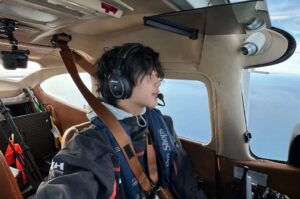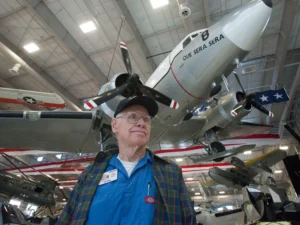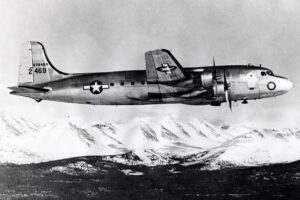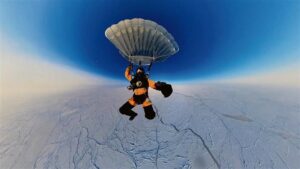The years of early aviation saw trial and immense error. Technology was primitive, and aviation pioneers did not have much to work with except their own designs and an overwhelming desire to forge a path for man to fly.
Balloons and dirigibles
The mid-19th century was marked by ambitious early attempts at flight, especially with balloons. French inventor Jacques Charles created the first manned balloon in 1783. The invention grew in popularity in the following years.
Balloons usually contained hydrogen or helium gas, also known as “lifting gases”. Inventors experimented with the balloon’s material, ranging from silk and paper to goldbeater’s skins — animal intestines. However, this revolutionary mode of transport did not come without its dangers. Many notable accidents ensued.
In 1824, English balloonist Thomas Harris perished during a flight over London. Supposedly, the hydrogen gas escaped from his balloon and the wind forced the contraption into a tree, killing him and injuring another.
In 1849, French balloonist Francisque Arban became the first person to fly across the Alps in a hydrogen balloon. However, the journey came to an abrupt halt when the wind held him hostage over the Mediterranean Sea. He vanished, no doubt a victim of drowning.

The downed balloon during the famous Andree expedition, a failed 1897 attempt to fly to the North Pole. Photo: Nils Strindberg
The Andree expedition
In 1897, a team of Swedish explorers — including the cousin of famed Swedish playwright August Strindberg — set out to travel to the North Pole by balloon. The balloon quickly lost hydrogen and crashed to the icy ground not long after they took off. The trio survived the crash but died shortly after. The remains of the men and their balloon were only discovered in 1930.
What did these expeditions have in common? All these aviators were unable to maneuver the balloon, so their flights were at the mercy of the winds. Steering and landing were difficult. The inventors did not account for the balloon’s interaction with the surrounding atmosphere or weather. They also failed to properly harness hydrogen gas. While ballooning achieved its goal of flight, it failed in control.
Building upon the experiences and lessons from balloonists, airships came onto the scene. These lighter-than-air vessels managed to solve the steering problem. A blimp used hydrogen gas but it also included a steam engine and propellers. While this invention changed the game, especially with the emergence of the Zeppelin company, they were not practical and could be dangerous. They were unable to carry heavy loads and did not fare well in turbulent weather. Also, hydrogen is highly flammable. A wayward spark can cause the entire contraption to explode.
This danger was never clearer than when the Hindenburg blew up on May 6, 1937, the explosion memorably captured on camera. It essentially ended the airship craze. A hydrogen leak, rainy weather, electrical discharge, and possible design flaws prompted the disaster.

Hindenburg disaster of 1937. Photo: Sam Shere
Gliders
Unlike ballooning, gliding relied solely on aerodynamics rather than lifting gases. Gliders took inspiration from the birds themselves. Sir George Cayley researched and designed winged flying machines, particularly the glider. In 1804, he even piloted one in a successful flight.
Decades later, a German pioneer in experimental gliding named Otto Lilienthal conducted around 2,000 flights in his hang gliders. He would jump from slight elevations and achieve short distances of up to 250m. Unfortunately, he suffered a mishap in the Rhinow Hills in northern Germany. He lost control of the glider and plummeted 15m, breaking his back. Lilienthal died 36 hours later.

Otto Lilienthal in flight. Photo: Richard Neuhauss
In 1899, British aviator Percy Pilcher also suffered a fatal fall from his hang glider, despite vast experience and many successes with the machines he built. While gliding in stormy weather, his canvas wings became soaked with water, and the frame snapped. He fell 10m and died two days later.
Despite the serious dangers of gliding, the work of Otto Lilienthal and Percy Pilcher helped in the research and development of more advanced machines, such as those of the Wright Brothers.
What made gliding so dangerous was their ever-present instability and inability to recover.
Collisions and crashes
The first passenger plane crash happened in 1908, and it involved the Wright Brothers. They were vying for a military contract, which promised to turn their dream into a thriving commercial enterprise. Orville Wright and his passenger, Thomas E. Selfridge, were doing a series of test flights at Fort Myer, Virginia. Sometime after a routine takeoff, one of the propellers flew off and the plane nose-dived 22m. Orville Wright survived, but Selfridge died, making him the first passenger to die on an airplane.
From 1910 to 1912, a couple of famous mid-air collisions took place in Italy and France. Both incidents involved army personnel. In October 1910, pilots Rene Thomas and Captain Bertram Dickson collided but thankfully survived. About two years later, pilots Marcel Dubois and Albert Peignan died in the world’s first fatal mid-air collision.

Wright’s airplane in army test flights at Fort Meyer, Virginia. Photo: Everett Collection/Shutterstock
In June 1919, the first nonstop transatlantic flight ended in a crash in a peat bog in Ireland. While there were no injuries, it emphasized how dangerous and volatile aviation continued to be at this time.
Developments in aviation safety
The high number of accidents prompted officials to put measures in place to ensure passenger safety. For example, the establishment of organizations like the Federal Aviation Administration and the Civil Aviation Authority, the installation of air traffic control, and legislative acts like the Air Commerce Act of 1926 demanded proper regulations, safety checks, and more.
We take the sacrifice of early aviators for granted. All the comforts we now have are thanks to these bold individuals who put their lives on the line to push the aviation industry forward.






